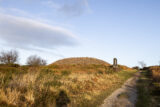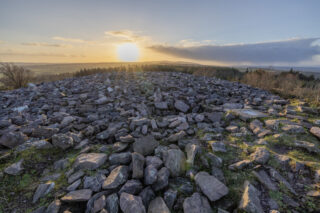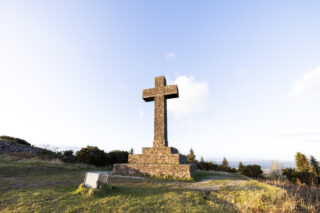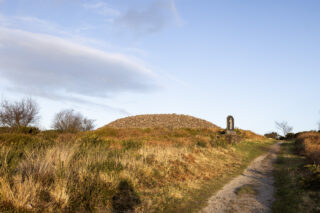Fógra
WARNING: It should be noted that these sites are unguided and a level of care and caution should be maintained during all stages of your visit. The Office Of Public Works (OPW) will not be held responsible for any damages, injuries, or losses that occur
Carntierna Hillfort
South of Fermoy town stands Corrin Hill, part of the Nagle mountain range, atop of which sits Carntierna cairn and hillfort surrounded by forestry. The Bronze Age oval cairn, a mass heap of stone, was said to have been 19ft high in 1886. In 1832, after the removal of several hundred tons of stone a cist was found in the cairn. This cist contained two chambers, the first had a fragment of an urn and the second contained an urn with a small quantity of ashes. The second urn was described as being rudely carved with lozenges and had a conical cap.
Both the cairn and cists are found within the hillfort enclosure. The hillfort is oval in shape and has three embankments making it conform to the definition of a hillfort. Hillforts were typically built during the Middle to Later Bronze age and were found to be re-occupied up to the Early Medieval period. Carntierna was a centre of assembly and ceremony and its prominent location and large size indicate the importance of this site.
The anglicised version of Carntierna is Tigernac’s cairn. Tigernac, in Irish tradition, was a legendary ruler of Munster, and Carntierna was his burial site.
Visit Historic Environment Viewer for more information on Carntierna Hillfort
Protect our Past - Click here to read about the importance of protecting our country’s unique heritage sites
This national monument is protected in accordance with the National Monuments Acts 1930 to 2014




